NGC 5053
Click image for full size version
June 1, 2025
NGC 5053 tends to be ignored by imagers and observers alike, including me until about 2015, because of its surroundings: NGC 5053 lies near a much brighter, richer globular cluster, M53. NGC 5053 contains only a few thousand stars, so it lacks the dense central condensation of stars seen in most globular clusters, which can contain millions of stars. NGC 5053 belongs to Class 11 of the Shapley-Sawyer Concentration Class for describing globular clusters, where Class 12 is the most sparse. In the eyepiece NGC 5053 looks to me more like an open cluster, but in an image it has the mix of red and blue stars that I see in most globular clusters, and seldom in open clusters. NGC 5303 is about 1/3 the width of the full Moon. It lies 53,500 light years from us, and is about 160 light years across. There are small galaxies scattered throughout the image — look for soft and/or oval “stars” and short spindle-like streaks. Some are identified in the annotated image.
Tekkies:
Acquisition, focusing, and control of Paramount MX mount with N.I.N.A., TheSkyX. Guiding with PHD2. Primalucelab low-profile 2″ Essato focuser and ARCO rotator. Equipment control with PrimaLuce Labs Eagle 4 Pro computer. All pre-processing and processing in PixInsight. Acquired from my SkyShed in Guelph. Data acquired under minimal moonlight, good transparency and average seeing May 31-June 1, 2025.
Celestron 14″ EDGE HD telescope at f/11 (3,940 mm focal length) and QHY600M camera binned 2×2 with Optolong filters.
10 x 5m Red = 50m
11 x 5m Green = 55m
10 x 5m Blue = 50m
Total: 2hr 35m
Preprocessing: The WeightedBatchPreProcessing script was used to perform calibration, cosmetic correction, weighting, registration, local normalization, and integration of all frames.
RGB master: An RGB image was made from the Red, Green and Blue masters using ChannelCombination in RGB mode.
Synthetic Luminance: A SynthL was made by integrating the three masters, weighted by SNR, with no pixel rejection.
Gradient Removal: MulstiscaleGradientCorrectioni (preceded by SpectrophotometricFluxCalibration) as applied first followed by DBE to remove gradients from the RGB and SynthL masters.
Colour Calibration: SpectrophotometricColorCalibration was used to calibrate the RGB master.
Deconvolution: BlurXterminator was applied to the RGB and SynthL masters with Automatic psf , star sharpening set to 0.35, and non-stellar set to 0.15.
Linear Noise Reduction: NoiseXterminator was applied to the RGB and SynthL masters with settings Amount=0.9 and Detail=0.15
Stretching: HistogramTransformation was applied to the RGB and SynthL masters to make pleasing images. Approximate background level after stretch was 0.1 for SynthL and 0.09 for RGB.
Nonlinear Processing
Combinining SynthL and RGB: LRGBCombination was used to replace the lightness channel of the RGB image with the SynthL.
Nonlinear Noise Reduction: NoiseXterminator was used to reduce noise in the background areas of the SynthRGB master with Amount=0.9 and Detail=0.15.
Re-stretch: HistogramTransformation was used to boost contrast by moving the dark point to the toe of the histogram and slightly decreasing the mid-point slider.
Final Steps: Background, globular cluster, and star brightness, contrast, hue, and saturation were adjusted in several iterations using CurvesTransformation with masks as required. ICCProfileTransformation (sRGB IEC61966-2.1; Relative Colorimetric with black point compensation) was applied prior to saving as a jpg. The finder chart was made using the FindingChart process. The annotated image was made using the AnnotateImage script.

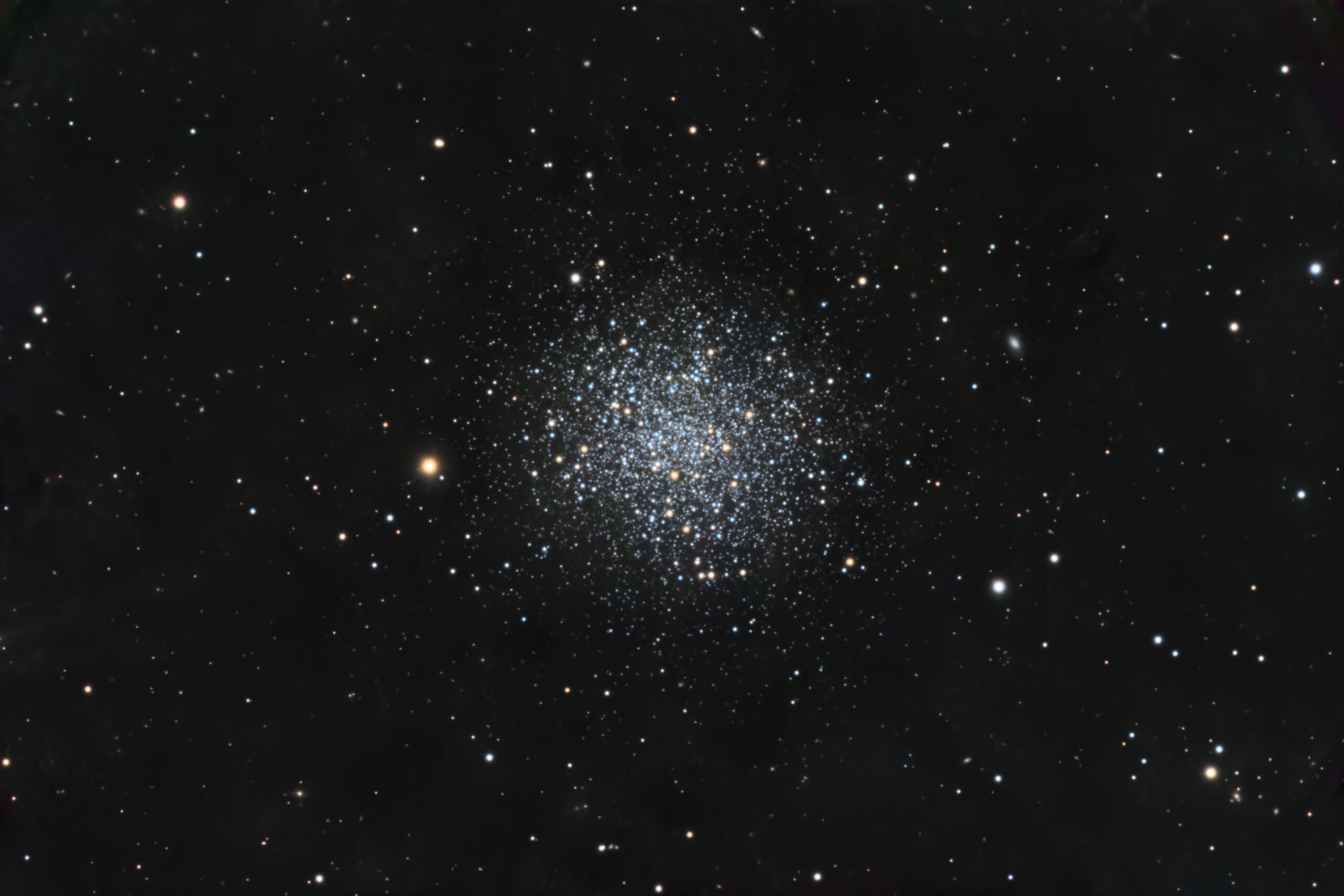
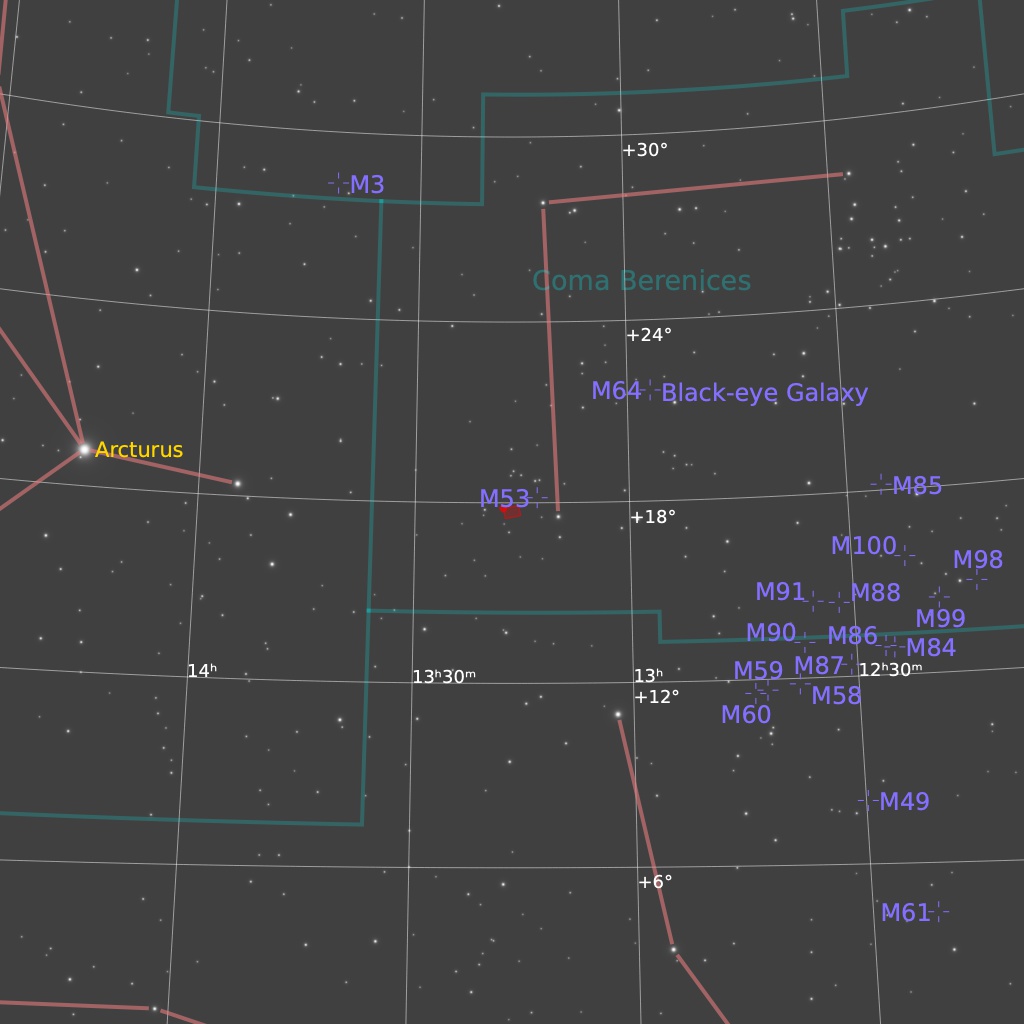
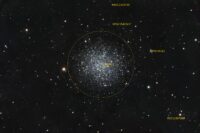
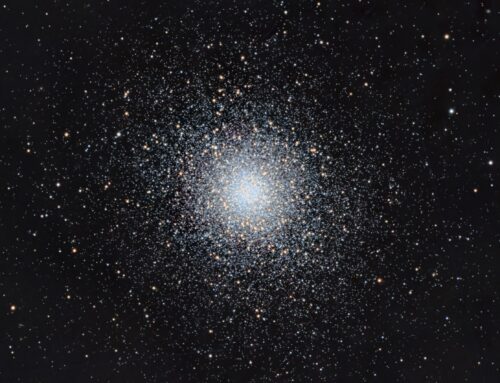


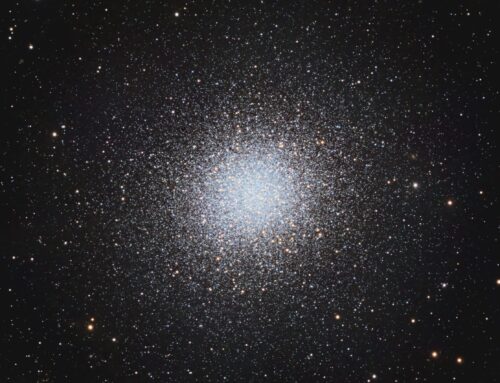

Leave A Comment